What is comprehensive arthroscopic management?
Comprehensive arthroscopic management (CAM) is a minimally invasive surgical procedure used to treat early to moderate shoulder arthritis, particularly in younger or more active patients. It is designed to relieve pain, restore movement, and delay or avoid the need for shoulder replacement surgery.
CAM surgery involves a combination of keyhole techniques to clean the joint, address soft tissue problems, and reduce inflammation — all through small incisions using a camera and specialised instruments.
When is CAM surgery recommended?
You may be offered CAM surgery if:
- You have early or moderate arthritis in the shoulder joint
- You are experiencing shoulder pain, stiffness, or loss of motion
- Scans show cartilage wear, bone spurs, or loose debris in the joint
- You are too young or active for a joint replacement
- Non-surgical treatments (like physiotherapy or injections) haven’t relieved your symptoms
CAM is particularly helpful if your symptoms are related to mechanical irritation inside the joint.
What does the surgery involve?
The procedure is carried out under general anaesthetic and typically takes around 1 to 2 hours. It is usually performed as day surgery.
Your surgeon will:
- Use small incisions to insert a camera (arthroscope) and instruments into the shoulder
- Remove inflamed tissue, bone spurs, and loose cartilage
- Smooth rough joint surfaces
- Release tight structures if needed to improve movement
- Treat any associated problems such as impingement or labral damage
The exact steps will depend on what is found inside the joint during surgery.
Recovery and rehabilitation
After surgery, your arm will usually be placed in a sling for comfort, but you’ll begin gentle movement within days. A personalised physiotherapy programme will help you regain strength, control, and flexibility.
You can typically expect:
- Return to desk work within 1 to 2 weeks
- Resume light activity within 6 weeks
- Return to sport or heavy work by 3 to 4 months
Full recovery can take several months depending on the extent of joint damage and your rehabilitation progress.
Risks and complications
CAM is a low-risk, keyhole procedure, but like all surgery, it carries some risks. These may include:
- Infection
- Shoulder stiffness or ongoing pain
- Bleeding or swelling in the joint
- Damage to surrounding structures (very rare)
- Limited symptom relief if the arthritis is more advanced than expected
Your surgeon will talk you through the potential risks and expected outcomes before surgery.
Will it cure my arthritis?
CAM doesn’t reverse arthritis, but it can significantly improve your symptoms and shoulder function. For many people, it delays the need for shoulder replacement surgery — sometimes for years. The earlier CAM is performed, the more effective it is likely to be.
Why choose Midlands Orthopaedic Clinic?
At Midlands Orthopaedic Clinic, we offer advanced keyhole shoulder surgery, including comprehensive arthroscopic management for arthritis and complex joint conditions. Our experienced consultants are experts in managing shoulder pain in younger, active patients who are not yet ready for joint replacement.
You’ll receive personalised care, fast access to assessment and imaging, and a clear plan to get your shoulder moving again.
Get in touch
If you’ve been told you have shoulder arthritis and want to explore minimally invasive treatment options, we’re here to help. Contact Midlands Orthopaedic Clinic today to book an appointment with one of our expert shoulder surgeons.




